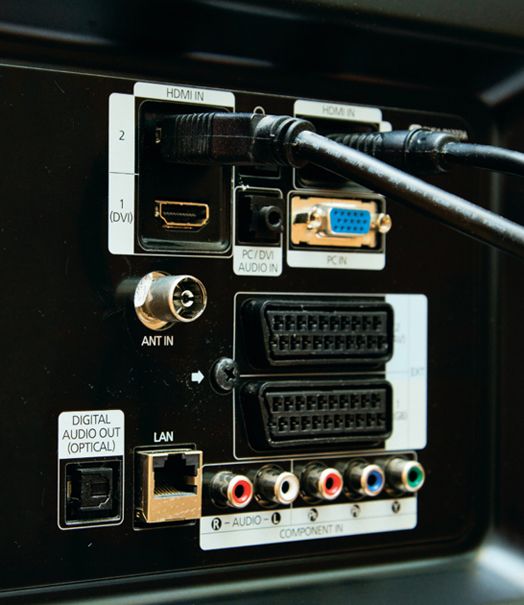1996
HDTV
In 1964, the NHK, or Japan Broadcasting Corporation, began to research a better method of television to engage with the “five human senses” after the Tokyo Olympics. This was the start of a long process leading to a transition from analog to digital transmission. In the United States, prior to HDTV, television stations broadcast analog signals, using the NTSC standard to define what the signal looked like. As long as everyone (TV stations and manufacturers) adhered to that same standard, stations knew that every television set would be able to decode their signal and consumers knew that they would be able to receive every TV station. The FCC (Federal Communications Commission) allocated standard frequencies for each TV station and everyone was happy.
Cable TV came along and transmitted the same NTSC signals on standard FCC frequencies along a cable. Everyone could hook their TVs to any cable system and it would work. Video recorders could record NTSC signals, or play them back, usually on channels 3 or 4 of the television. Video game consoles also played on channel 3 or 4. A gigantic economic ecosystem was built on these engineering standards, with billions of TVs and devices, thousands of broadcasters and cable systems. Everything worked universally with everything else.
To implement high-definition pictures, everything needed to change. The NTSC analog standard would be abandoned in favor of compressed digital signals with ten times better resolution. TV stations and cable systems began to send out these much better signals starting in 1996. Everyone needed to buy new HDTVs and hook them to new HD devices with new HDMI cables. All new equipment (cable boxes, Blu-ray players, video game consoles, etc.) used HDMI.
The world had never really seen anything like this change. There was a specific day (June 12, 2009) when all analog broadcasting ended in the United States. And yet engineers pulled this transition off and people willingly accepted it to get ten times better images on their TVs. It shows how much engineers can accomplish when everyone can get behind a new standard.
SEE ALSO Color Television (1939), Cable TV (1948), VHS Video Tape (1976).

Modern HDMI TV audio/video input connection panel.